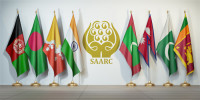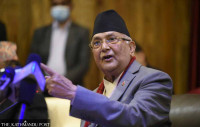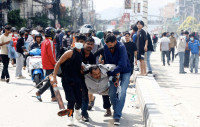Sat, Dec 13, 2025
Opinion
Sweeping (away) generalisations
The mindset that looks upon all NGOs with suspicion must be challenged
bookmark
Dipendra KC
Published at : December 27, 2018
Updated at : December 27, 2018 09:42
During a conversation over a cup of coffee, a friend who works in a local reputable commercial bank made a mid-sip interjection that caught me off guard: ‘Non-governmental organisations (NGOs) fabricate their reports to make money.’ The statements that ensued from this initial comment highlighted his deep-rooted skepticism of NGO work. Given his limited encounters with the sector in his personal and professional life, I was initially surprised. But as we delved deeper into our conversation, I realised his mindset of mistrust over NGO actors is far from new in Nepal’s public rhetoric. Cynicism over NGO work has been brewing for generations. Today, NGO work is likely one of the least trusted and most criticised approaches to development in Nepal. The sector is primarily slammed for its reliance on projects funded by International Nongovernmental Organizations (INGOs) and international donors. Because of their associations with International groups, NGOs are often contorted to represent foreign values and, by proxy, are often viewed by traditionalists with deep suspicion. It is important to challenge this narrative by highlighting the sweeping generalisations made in these debates.
Figures are misguiding
Vehement NGO naysayers often use numbers as tools to strengthen their arguments. The most commonly cited figures in these debates are derived from information provided by the Social Welfare Council (SWC) of Nepal. For example, SWC reports that there are a total of 46,000 NGOs in Nepal. People often use this seemingly large figure as reason to conclude that the NGO sector in Nepal is riddled with corruption; many ask, ‘if there are so many NGOs in Nepal, how come we haven’t developed to our maximum potential?’ The question often draws misguided associations between NGO work and organisations involved in dollar kheti or money farming. The issue lies in the fact that many people are quick to jump to conclusions and do not take the time to scrutinise the number through closer inspection.
An important fact that many overlook is that this number does not distinguish between project-based development organisations, independent organisations and affiliated organisations. In fact, the number is all-encompassing. If the number of projects approved by SWC are an indication of direct assistance to NGOs, only 1,181 projects of the 723 organizations were approved in the fiscal year 2074-75. If we compare these numbers with the total number of NGOs, roughly less than 2 percent of organisations affiliated with SWC receive some sort of direct funding from abroad. Even if we tally these numbers with NGOs affiliated with the ‘NGO Federation of Nepal’, approximately 11 percent of the total organisations received some kind of direct funding from abroad. In addition, roughly 13 percent of organisations are categorised as organizations engaged with youth and—if people took the time to inspect the list—they would soon realise that many organisations under this subheading are youth clubs. The list also includes organisations that provide transport to old age homes. One would be making a mistake by applying blanket generalisation of an entire sector based on one number.
To substantiate the claim that ‘NGOs mismanage their funds by focusing solely on Kathmandu’, many people leverage the fact that ‘eleven NGOs exist to serve a thousand people in Kathmandu valley while only one NGO exists outside the valley for the same number of people.’ In other words, many people discredit the sector because roughly two thirds of the total number of organisations exist in Kathmandu valley. While the numbers are true to reality, one must understand that since these organisations are not self-contained, the key to their survival is the ability to acquire and maintain key resources. Hence, NGOs tend to be in areas where they can meet their needs, be it financial, human resource, or otherwise. Often, NGO head offices are based in Kathmandu while provincial staff or deployed to local areas. This is a common global practice among NGOs as it serves as a way to ensure that offices are working at full capacity with access to essential resources and infrastructure. This in turn ensures the quality of their work. A majority of NGO offices in developing countries such as Kenya, Brazil and Bangladesh are also found in the capital cities of the respective countries.
One size doesn’t fit all
The number of NGOs, be it over 46,000 or over 6,000, warrants more reasons to celebrate than to lament. Our cynicism should not overshadow the fact that NGOs have played (and will continue to play) a very important role in shaping a vibrant environment for civil society in Nepal.
We have reasons to cherish this number as it captures the associational revolution Nepal has gone through. It took 24 years for us to have our first 314 NGOs and 27 years to have an additional 46,000. These numbers are an indication of a healthy democracy and associational life. It is also an indication of the rise of civic awareness and participation in the affairs that matter to communities.
While it is important to challenge organisations that misuse funds and engage in dodgy accountability practices, it is not productive to apply a one-size-fit-all understanding of NGO work throughout the sector. By applying blanket generalisations, we are harming the development of a strong civil society in the country. Challenging this narrative will become increasingly more important as the current government continues to introduce stringent measures to monitor, scrutinise and limit NGO work in Nepal. The draft and subsequent passing of the National Integrity Policy was seen as a major setback to NGO work as it included a list of overly stringent blanket policies that promote the assumption that all NGOs come to Nepal with the malintentions. Many NGOs in the country are now not only faced with the pressure to enact developmental change but are now also grappling with increasing political pressure. There will always be a few bad apples but applying sweeping generalisations to a community that has largely supported Nepal through several developmental interventions is not a fruitful endeavor.
KC is a faculty at the School of Global Studies, Thammasat University, Thailand.
Editor's Picks
Public savings at risk as debt-ridden Nepal Airlines’ finances spiral
Hypertension and diabetes driving eye crisis in Kathmandu Valley
Bureaucratic hurdles, legal failures force father and daughter to take their own lives
Record graft case filed over China-funded Pokhara airport
Drone helps farmers tackle old challenges
E-PAPER | December 13, 2025
×




 19.12°C Kathmandu
19.12°C Kathmandu










